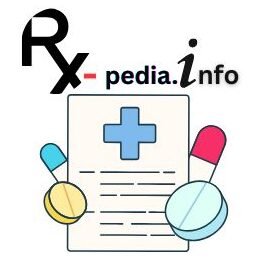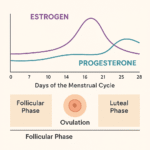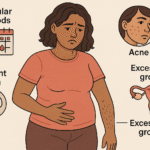
Introduction: What is Epilepsy in Children?
Table of Contents
What is Epilepsy in Children?
Epilepsy is a neurological condition that causes seizures due to abnormal electrical activity in the brain. It’s not uncommon in children, and while it can be daunting, understanding it is the first step towards managing it effectively.
What is Epilepsy?
Epilepsy is characterized by recurrent seizures, which are sudden bursts of electrical activity in the brain. These seizures can vary in type and severity, and not all seizures are the same. Some children might experience brief staring spells, while others might have more noticeable convulsions.
How Common is Epilepsy in Children?
Epilepsy affects many children worldwide, and while some outgrow it, others may need lifelong management. It’s crucial to recognize the signs early to ensure timely intervention and support.
Common Epilepsy Symptoms in Children
Let’s start by discussing the various seizure types that children may experience. Not all seizures look the same, and some can be quite subtle. Here’s a breakdown:
- Focal Seizures: These begin in one area of the brain and can cause changes in sensation, emotions, or consciousness. For instance, your child might suddenly stare blankly for a few seconds or exhibit unusual movements like twitching.
- Generalized Seizures: These involve both sides of the brain from the onset. They include:
- Tonic-Clonic Seizures: Often what people think of when they hear “seizure.” Your child may lose consciousness and experience violent muscle contractions.
- Absence Seizures: Characterized by brief lapses in awareness, these can be mistaken for daydreaming. Your child might just stop what they’re doing and stare into space.
Recognizing these symptoms is vital because they can sometimes be mistaken for other issues, like behavioral problems or even daydreaming.In addition to seizures, many children with epilepsy may show behavioral changes or developmental delays. For example, you might notice:
- Increased irritability or mood swings.
- Difficulty concentrating or learning new things.
- Changes in sleep patterns, such as insomnia or excessive daytime sleepiness.
I remember talking to a parent who noticed her son was more withdrawn after being diagnosed with epilepsy. It turned out that his seizures were affecting his social interactions at school.
Diagnosis of Pediatric Epilepsy
Once you suspect your child may have epilepsy, the next step is diagnosis. This process involves several key components:
- Detailed Medical History: Your doctor will want to know about your child’s medical background. They’ll ask questions like:
- Has your child had any head injuries?
- Is there a family history of epilepsy?
- What do the seizures look like?
- Diagnostic Tests:
- Electroencephalogram (EEG): This test measures electrical activity in the brain and is crucial for diagnosing epilepsy. It can help identify seizure types and patterns.
- Magnetic Resonance Imaging (MRI): An MRI provides detailed images of the brain and can reveal structural abnormalities that may be causing seizures.
- Observation: Sometimes, doctors will want to observe your child during an EEG to capture seizure activity on video. This can provide invaluable information about what’s happening during a seizure.
It’s essential to gather as much information as possible about your child’s seizures before the appointment. Keeping a seizure diary can be incredibly helpful—note down when seizures occur, how long they last, and what your child was doing beforehand.
Treatment Options for Children with Epilepsy
Once diagnosed, you’ll want to explore treatment options tailored to your child’s needs. Thankfully, advancements in epilepsy management have made it more manageable than ever before.
- Medications:
- Anti-seizure medications are often the first line of treatment. Common ones include:
- Lamotrigine
- Levetiracetam
- It’s crucial to work closely with your healthcare provider to find the right medication and dosage for your child.
- Anti-seizure medications are often the first line of treatment. Common ones include:
- Dietary Therapies:
- Some families find success with dietary approaches like the ketogenic diet, which is high in fats and low in carbohydrates. This diet can help reduce seizure frequency in some children.
- Surgical Options:
- For children whose seizures are not controlled by medication, surgery may be an option. Procedures can range from removing the part of the brain where seizures originate to implanting devices that help regulate brain activity.
- Behavioral Interventions:
- Supporting cognitive development through educational interventions can also make a significant difference. Working with teachers to create an accommodating learning environment is essential.
It’s important to remember that every child is unique, so what works for one may not work for another. Regular follow-ups with your healthcare team are vital for adjusting treatment as needed.
Impact on Daily Life and Development
Living with epilepsy doesn’t just affect seizure control; it also impacts daily life and development significantly. Children may face challenges at school and in social settings due to their condition:
- Education: Seizures can disrupt learning processes, making it harder for children to keep up with their peers.
- Social Interactions: Children might feel isolated or different from their classmates due to their condition or fear of having a seizure in public.
Parents often worry about how their child’s epilepsy will affect their future opportunities and friendships. It’s essential to foster open communication with both your child and their educators about their needs.Here are some strategies parents can implement:
- Create a supportive home environment where your child feels safe discussing their feelings.
- Encourage participation in activities that promote socialization but are also safe.
- Work closely with teachers to ensure they understand your child’s condition and how best to support them academically.
By staying informed and proactive, you can help mitigate some of these challenges while fostering a positive environment for growth and development.
What should I do if I suspect my child has epilepsy?
If you notice signs of seizures or other concerning symptoms, consult your healthcare provider immediately for evaluation and possible testing.
How are seizures diagnosed?
Diagnosis typically involves a detailed medical history, physical exams, EEGs, and possibly MRIs to assess brain activity and structure.
What treatment options are available?
Treatment may include medications, dietary therapies, surgical options, and behavioral interventions tailored to your child’s specific needs
Can children outgrow epilepsy?
Some children may outgrow certain types of epilepsy as they age; however, this varies widely from child to child.
How does epilepsy affect learning?
Epilepsy can impact attention span and memory retention; therefore, additional support at school may be necessary for affected children.










